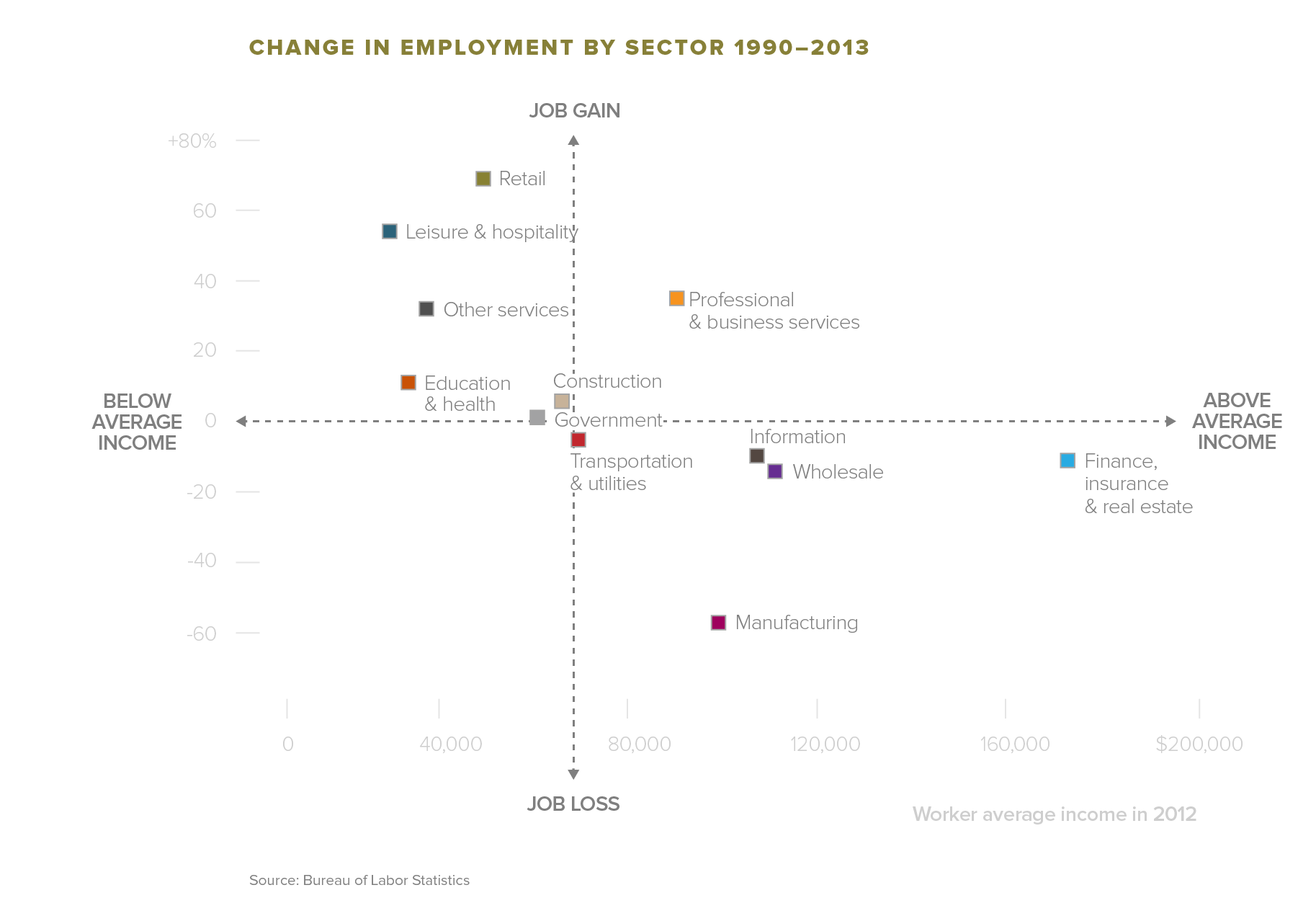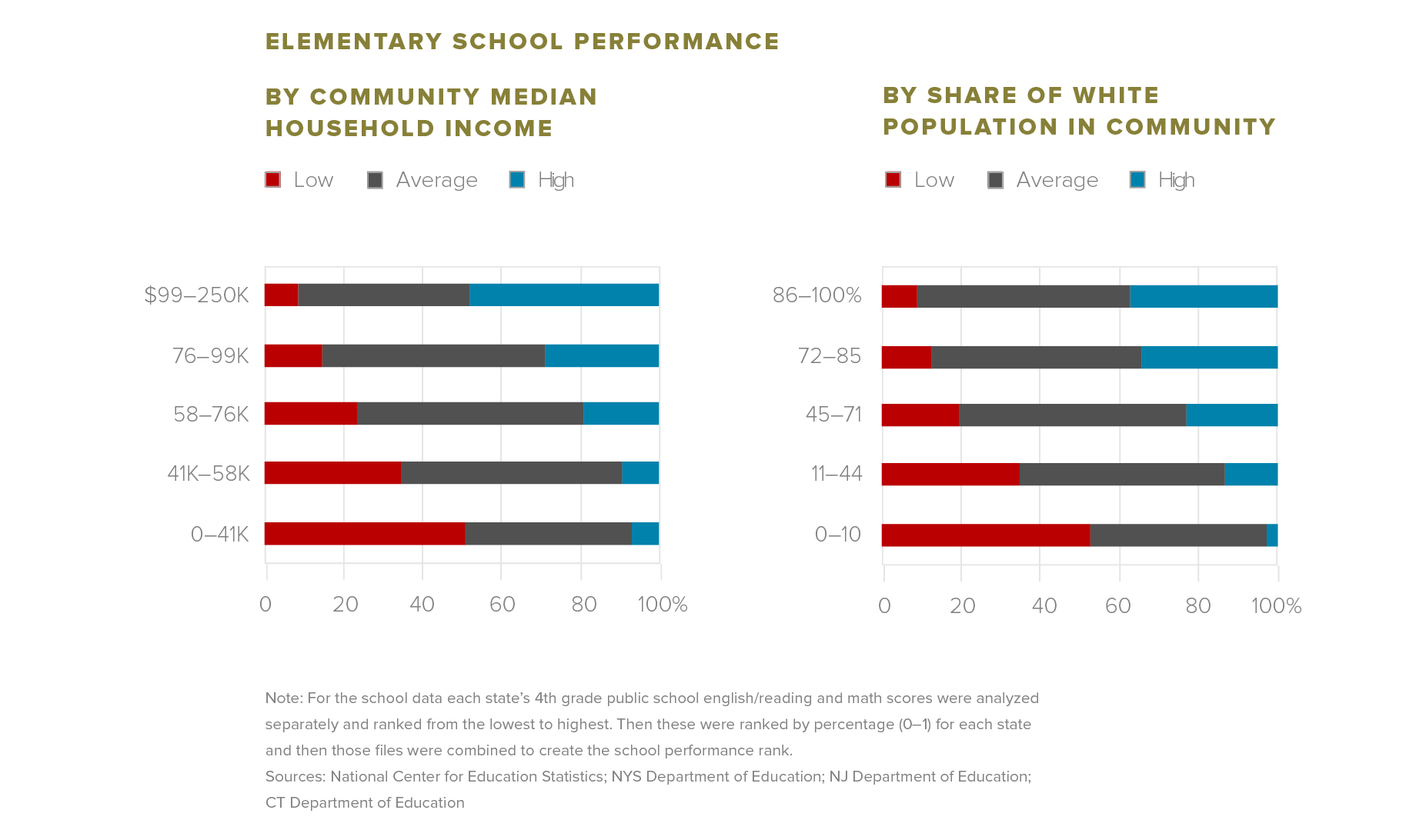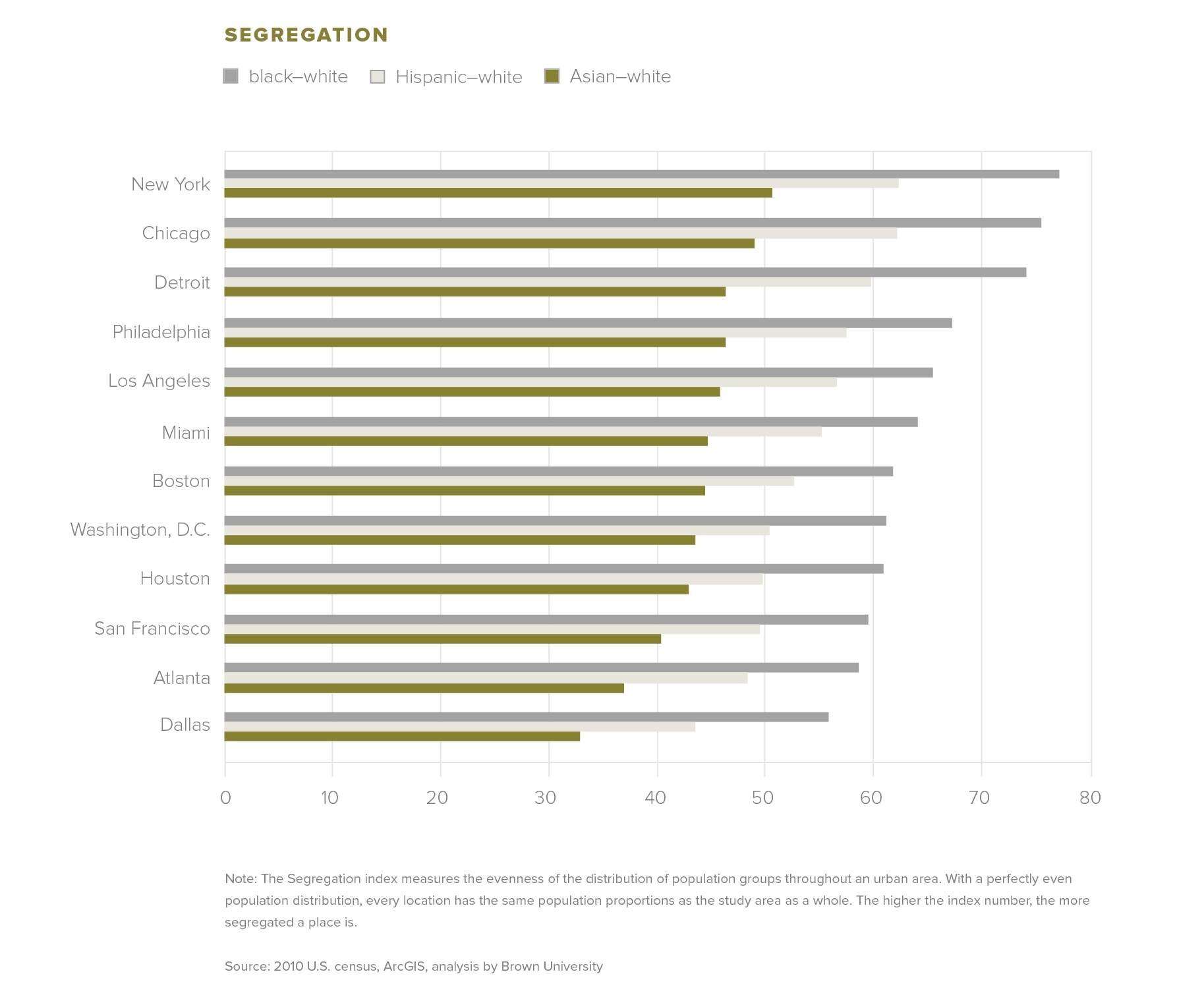Opportunities are limited for too many people.
As a result, more people live in poverty today than a generation ago, and the middle class faces wage stagnation and a crisis of affordability. Segregation by race and class in our communities is limiting educational opportunities for too many young people.
 SCROLL TO LEARN MORE
SCROLL TO LEARN MORE
Median incomes, adjusted for inflation, have dropped since 1990 for more than three-quarters of the region’s households.
Region-wide, median household incomes have dropped by 4% since 1990 – a steeper decline than the national drop of 1%.

The changing economy is narrowing the path to higher-paying jobs.
Many of the industries that have seen the greatest gains in number of employees pay the lowest wages. Higher-paid jobs tend to be in industries that are declining in employment.

Education is a strong predictor of future success. Yet we fail to provide quality public education to children in many poor and non-white communities.
Even adjusted for income, elementary school test scores are very highly correlated with upward mobility. And yet, the region offers children in poor and non-white communities access to a small fraction of the number of good schools that children living in higher-income and whiter neighborhoods have.

And our communities are some of the most segregated in the nation.
With the share of African-Americans, Hispanics and Asians at 48% of the region’s population and growing, the New York metropolitan area will soon be “majority-minority.” And yet, segregation among different ethnicities persists. In fact, we live in one of the most segregated regions in the country.



